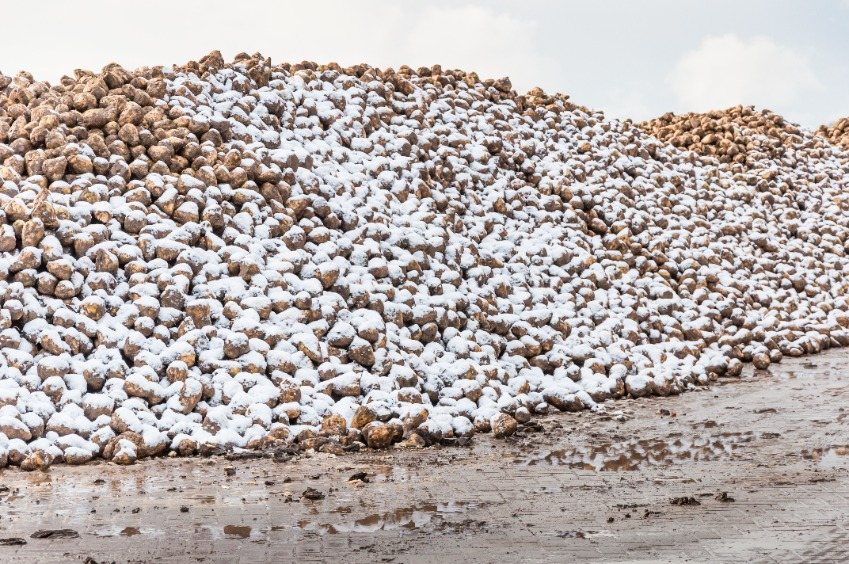
The recent freezing temperatures has increased the risk of frost damage to sugar beet, with a rising number of cases of damage being reported.
Extremely cold weather followed by sudden thaws could cause the deterioration of roots, the British Beet Research Organisation (BBRO) warns in new guidance.
The UK is currently seeing a spell of severe cold weather, with snow, ice and fog warnings in place across the country.
Beet tends to freeze at temperatures below -3 degrees Celsius, but the susceptibility to frost damage is often highly variable from field to field and even between plants within a field.
The BBRO says recent temperatures will have increased the risk of frost damage, but in many fields, conditions will have been borderline for more extensive damage.
The body urges growers to check sugar beet crops by looking at the crown of the beet to see if it is frozen.
Growers should then slice some roots into sections. Letting them thaw for a few hours should reveal the extent of damage, the BBRO says.
"Crops in clamps are likely to be most susceptible to frost damage," the BBRO explains in its guidance.
"Maus clamps with a higher surface area may be more prone. Crops still in the ground may be at lower risk but this will depend on the extent of insulation provided by canopy leaf growth.
"Gappy crops and those affected by foliar disease or beet moth (where is less leaf cover to protect them) will also be more susceptible."
The body says symptoms of frost damage will be apparent when beet have thawed following freezing.
Damage will be more apparent from the crown down through the root and will depend on the extent of freezing. Damage is due to rupturing of the cells.
"On thawing, a frosted root will take on a translucent glassy appearance with the vascular rings more prominent and may have a brown/black discoloration," the BBRO explains.
"Frost damage may be followed by secondary rots caused by fungi and bacteria, this will be more severe the warmer the temperatures are following frost damage.
"However, not all frosted beet will deteriorate, and in some cases, beet will stabilise but may have a lower sugar content and higher impurity level."
